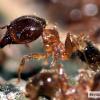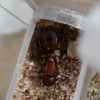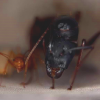Looks like what's his name may have been correct? I didn't read his posts or look at the timeline, but there was a 100+ ha infestation in San Diego after the 2014 one, which was much smaller.
That large an area (about 1 sq km) means they pushed away all the Linepithema humile ants outside of it.
https://escholarship...c/item/2b1813r9
The big-headed ant, Pheidole megacephala, is an ecologically destructive invader of tropical and subtropical environments worldwide. In April 2014, an established infestation of P. megacephala was discovered in a residential neighborhood in Costa Mesa, Orange County, and a second infestation was found in a residential neighborhood in San Diego, San Diego County, in 2019. Although big-headed ants are regularly detected in commerce in California, the records from Costa Mesa and San Diego represent the first established infestations known from the state. To learn more about the distribution of P. megacephala in California and to assess its potential for further spread, we delineated both known infestations and compared this species to another widespread invader, the Argentine ant (Linepithema humile), with respect to desiccation tolerance and resource assimilation (δ15N). Both known P. megacephala infestations extend over multiple hectares of suburban development, with the San Diego infestation exceeding 100 ha and the Costa Mesa infestation exceeding 10 ha. Both infestations are spatially continuous and encompassed by established populations of the Argentine ant. The big-headed ant overlapped broadly with the Argentine ant both in terms of desiccation tolerance and δ15N values. These similarities suggest that the big-headed ant could continue to spread in urban environments in coastal southern California and cause impacts comparable to those resulting from invasion by the Argentine ant.
Edited by kalimant, September 9 2024 - 9:03 AM.




















